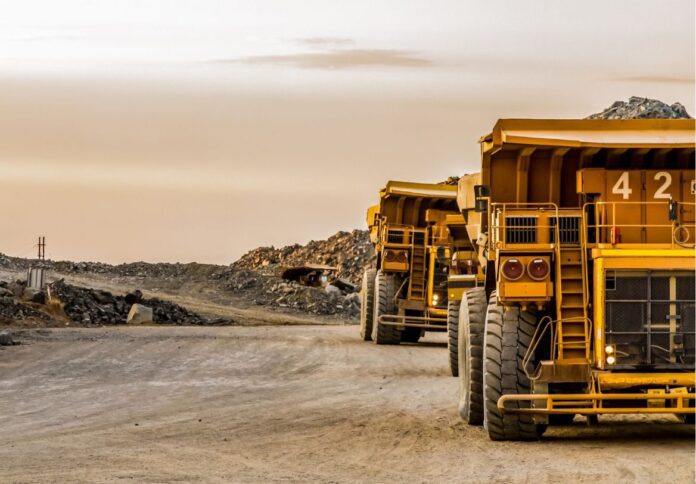
Article by Gareth Foster, Head of Industrial, Logistics & Consumer, Endava APAC
Despite a 56 per cent drop in mentions of “environmental sustainability” in mining filings during Q2 2024, the urgency for strong Environment, Sustainability and Governance (ESG) strategies has never been greater.
As environmental responsibility and ethical operations become critical priorities, to protect both the planet and the health of miners themselves, mining companies must turn to innovative technologies to drive safer, more ethical practices.
Focusing on training, technology and rigorous safety protocols prevents accidents and fosters a culture of vigilance. This proactive approach enhances worker safety while integrating sustainability into daily operations, helping the mining sector transition to a greener and more secure future. And mining companies must prioritise long-term sustainability goals, such as social responsibility and environmental conservation, to stay competitive.
Regulatory compliance and ESG strategy: The backbone of sustainable mining
Sustainable mining is anchored in strict compliance with environmental regulations, worker safety standards, land use policies and Indigenous rights protections. These regulations not only reduce environmental harm and safeguard workers but also secure a company’s social licence to operate. However, many mining companies are struggling to keep pace.
According to ENGIE Impact, only 19 per cent of companies reporting to the Carbon Disclosure Project (CDP) are on track to meet their sustainability goals, exposing a clear gap between requirements and the industry’s slow response.
Bridging this divide requires more than ticking the boxes. Stronger collaboration between product & design, engineering and ESG teams is crucial. By working together, these teams can integrate compliance seamlessly into all areas of operation.
Digital tools like real-time monitoring can help track environmental metrics and improve safety, while building partnerships with regulators and Indigenous communities will further align mining practices with evolving societal expectations.
This coordinated effort, grounded in teamwork and innovation, is key to driving sustainable outcomes and closing the compliance gap.
The importance of embodied data in sustainability
Accurate data management is one of the biggest challenges in reducing emissions and driving sustainability. As the starting point for gathering embodied data—the carbon footprint embedded in raw materials for the products we use every day—mining companies play a pivotal role in global efforts to measure emissions. This data is critical for other industries calculating their Scope 3 emissions, especially during Life Cycle Assessments (LCAs) and Product Carbon Footprints (PCFs).
To maximise this opportunity, mining companies must move beyond traditional spend-based tracking to adopt activity-based emissions tracking, providing more accurate and actionable insights. Leveraging this data not only supports global emissions reporting but also opens new opportunities for mining companies to monetise their data, contributing to improved sustainability across industries.
By leveraging tools such as predictive analytics and real-time emission monitoring, mining companies can better track and mitigate their environmental impact. A data-driven approach enables informed decision-making, allowing immediate corrective actions and positioning companies at the forefront of the race to decarbonise.
Emerging ways to clean up mining
As pressure builds to reduce environmental impact, mining companies are adopting solutions like circular operations, clean energy and decarbonisation as key strategies for a sustainable future.
Circular operations are a key part of cleaning up mining practices. By recovering valuable materials from waste, companies can significantly reduce environmental harm. For example, a silicon mining company reclaim silicon from e-waste, reducing the need for new raw material extraction. This approach not only lowers environmental disruption but also helps combat deforestation and biodiversity loss, aligning with global circular economy goals where resources are reused to ease the strain on ecosystems.
The transition to clean energy is a cornerstone of mining’s sustainability efforts. Companies are increasingly turning to renewable energy sources like solar and wind power, reducing reliance on fossil fuels and lowering greenhouse gas emissions. Beyond energy sources, technologies like electric vehicles and advanced machinery further reduce emissions across the value chain. These innovations are critical to helping the industry align with global sustainability targets.
But decarbonising mining operations requires more than switching energy sources – it demands transformation across the entire value chain. By adopting electric vehicles, renewable energy and efficient machinery, mining companies can cut emissions while improving operational efficiency.
Sustainability is no longer a future ambition for mining – it’s an urgent necessity. By embracing innovative technologies, adopting circular practices and transitioning to clean energy, mining companies can drastically reduce their environmental impact while promoting safer, more ethical operations. With accurate data, robust regulatory compliance and strong ESG strategies, the mining sector can remain resilient and competitive, leading the way towards a greener, more responsible future for both the communities they serve and the wider planet.




















